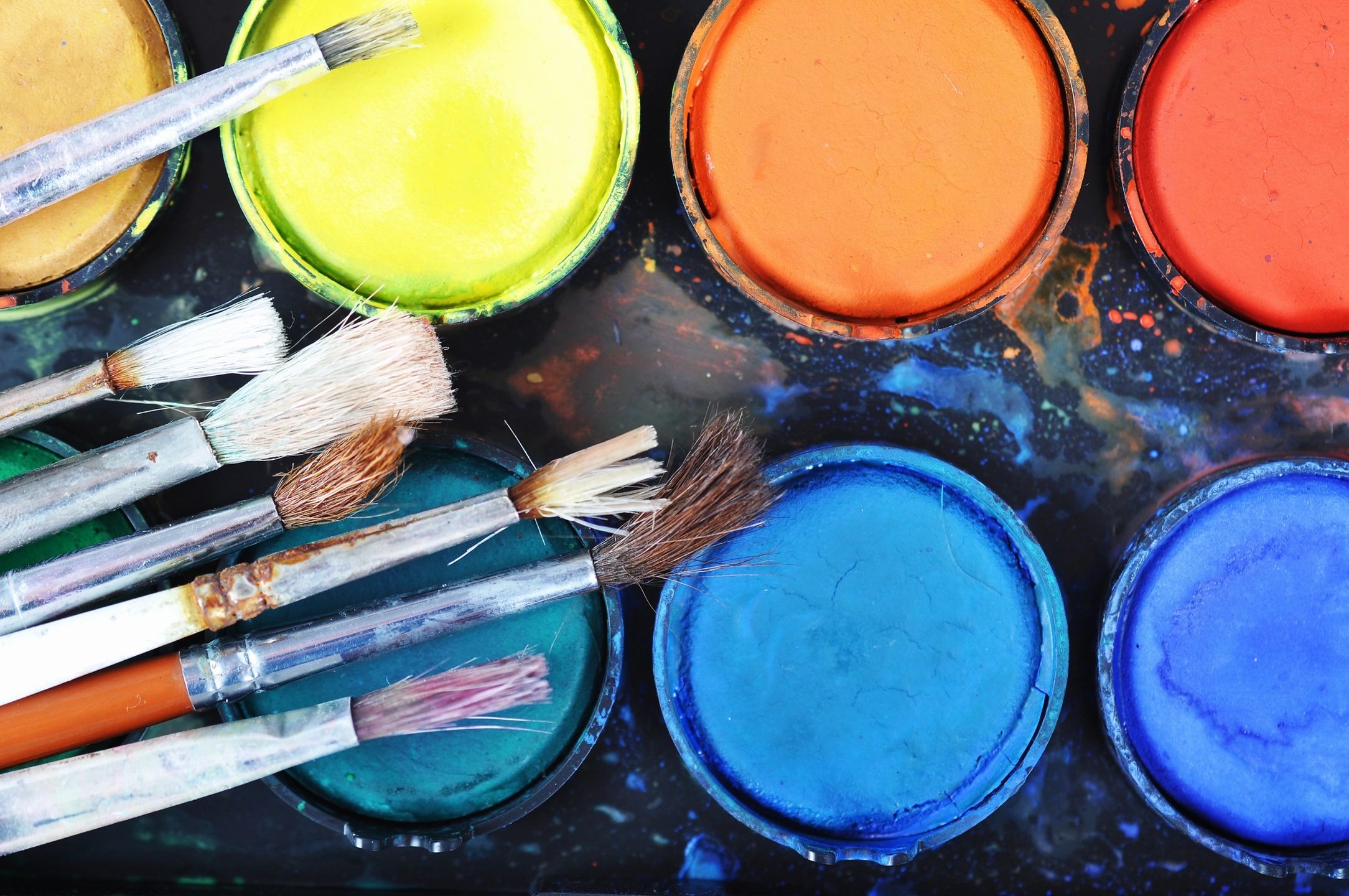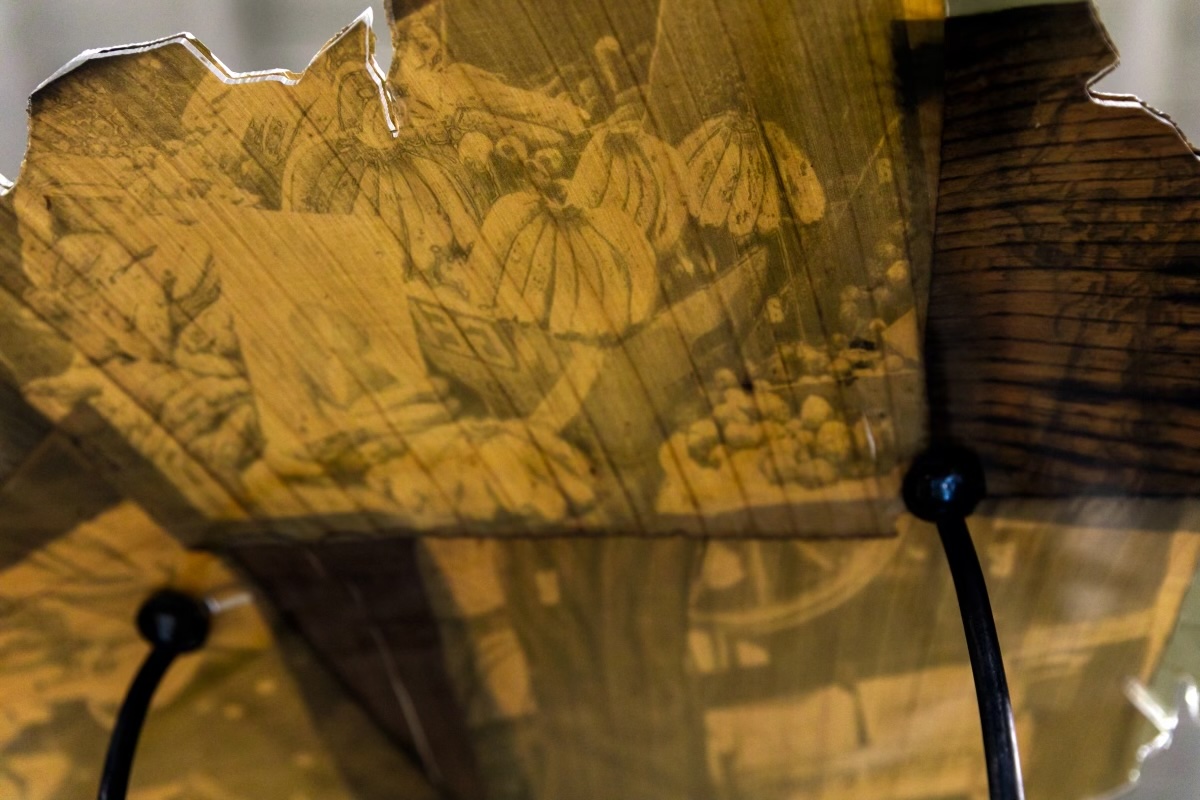I relish in art experiences that leave a lasting impact. Sites of Memory, the recent group show at UTA Artist Space in Beverly Hills, California, curated by Essence Harden, reminded me why I love art, particularly the current offerings of emerging artists of color who are channeling memory, history, and the possibilities of the future in the most interesting forms.
I’ve often connected with works by artists of color with a sense of nostalgia. Many of the artists I appreciate the most are the ones I feel speak directly to me through their work, and I can presume that Harden and I share the same sentiments. My experience with many works by Black artists, in particular, those focused on figuration and photography, is marked by a notion of familiarity—seeing something that needs no clarification, no translation. It’s a language I speak fluently as a Black person. Stepping into Sites of Memory felt like opening a photo album in my mother’s house. I don’t know who everyone is or what was even going on, but there’s a sense of connection, pride and protection.
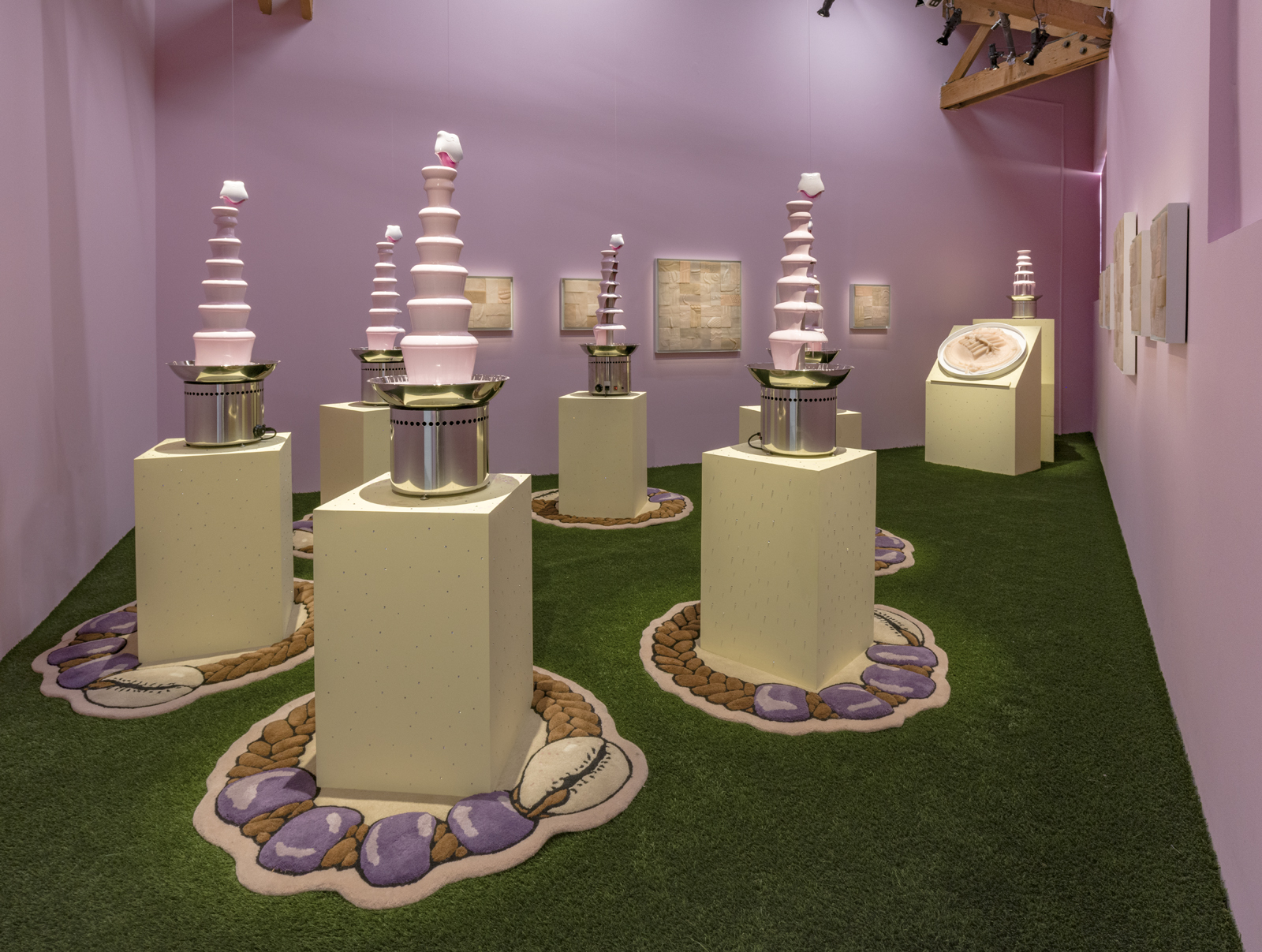
Above: Pamela Council, Blaxidermy
Harden has done a beautiful and noble job of centering each of these artists and their narratives in a way that feels respectful, warm, familiar and inviting. Pamela Council’s BLAXIDERMY, (2021) is a remarkable display of novelty, concept, and precision. Her installation of multiple fondue fountains of Luster’s Pink Oil Moisturizer smoothly pouring down from top to bottom, the colors and smells took me all the way back to the memories of being in the backseat of cars with my little cousins. On long drives, we’d fall asleep with our hair pressed against the windows or seats leaving curly swirls of grease stains from our overly moisturized hair. I was always enamored by the richness of the pink lotion and how it mixed into my hair, and it’s clear Council has the same fondness for the material. I thank Harden and Council for bringing to the surface a fun childhood memory almost forgotten.
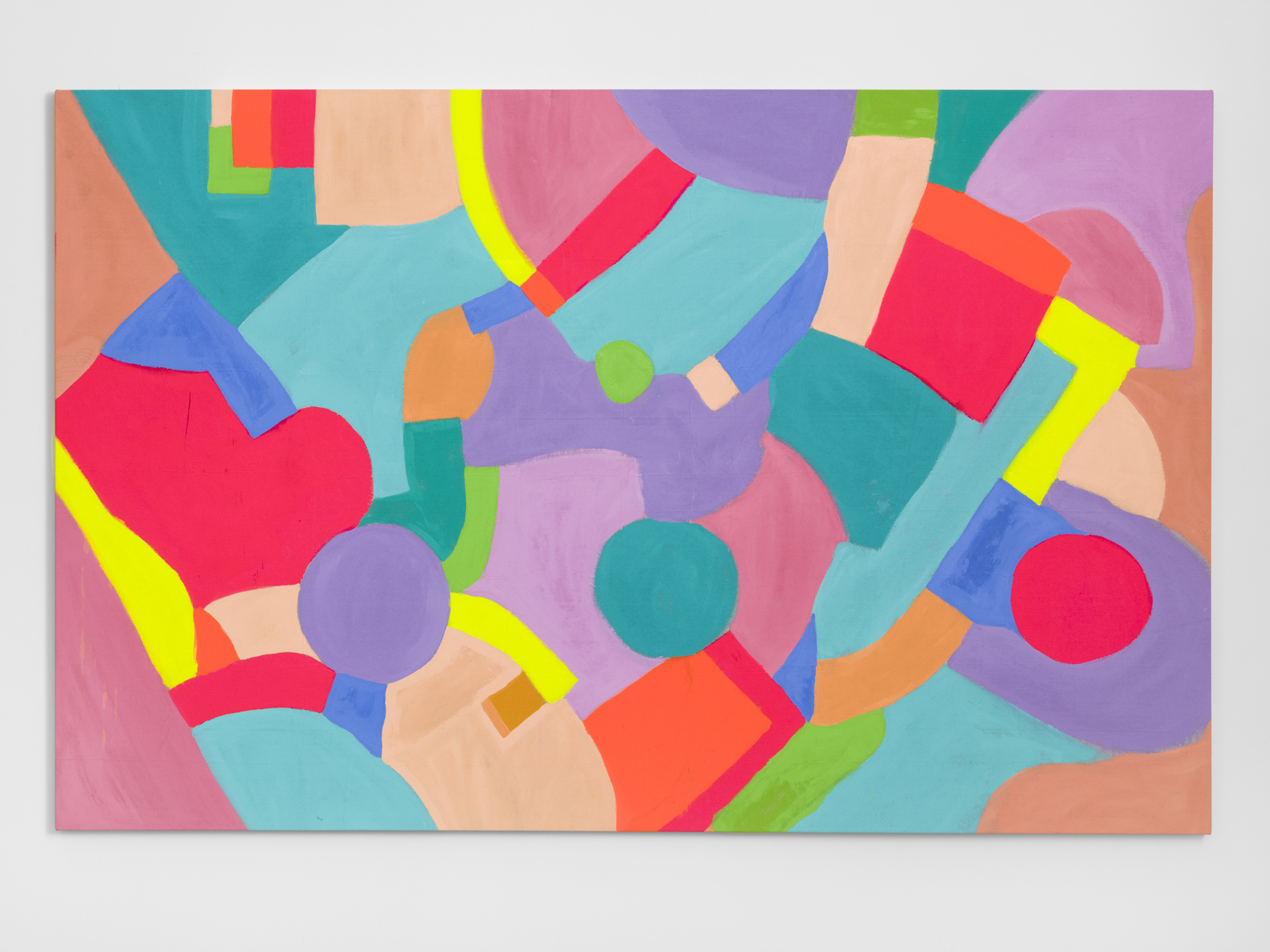
Above: Adee Roberson, Auto Rhythm Waterway.
Adee Roberson’s works have always brought me joy long before this presentation, so it was a delight to see Roberson’s work in this space. Roberson’s color palette and compositions invoke celebration and revival, and I feel a connection to the artist and the images more than any other pieces in the show. Roberson’s mix of paint and screen prints reminds me of pictures I once discovered amongst my mother’s old belongings—pictures of the past, youth and beauty slightly distorted by time and material.
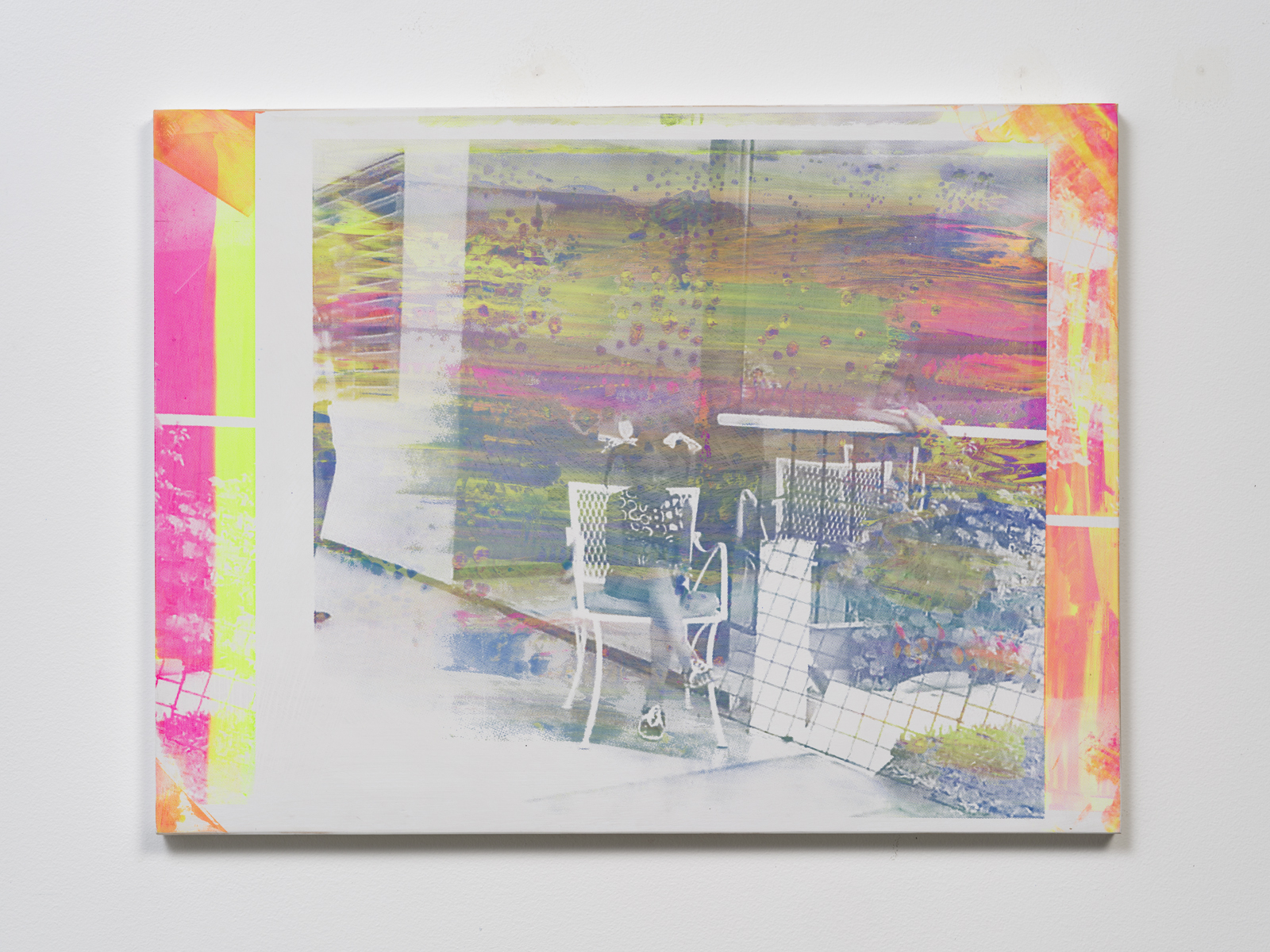
Above: Adee Roberson, Hazel.
Lebohang Kganye’s photography is similarly touching. The photographic manipulation transports the artist into the world of the image, a transcendence many can appreciate as a way of returning to a place and time long gone.
Anique Jordan’s selection amplifies the diasporic connections and the shared experiences of Black bodies in Black and white spaces and gazes. Black people are Black people everywhere in the world. Languages, systems and governing entities may be different, but the feelings are shared globally and the sentiments in Jordan’s work are magnetically strong. Jordan’s use of government documents and news material explores the artist’s placement in history and the future similar to artists like Sadie Barnette.
Natalie Ball’s mixed media work was a bit harder for me to digest. I appreciated the messaging, but I was so wrapped up in the mood from other works nearby that it was hard to sit too long with that work. However, what I love about Ball’s inclusion in this exhibition is the conjuring of all memories, even the prickly ones, and I appreciate artists using assemblage to convey messages and memories. Conversely, Basil Kincaid’s She Glows (2018) and Day of the Family pt. 1 (2018) felt a bit more inviting with the multiple textures, stitching and personalization. It’s work that I can return to easily.
On my way out, I ran back for a last look at Gideon Appah’s Three Women on a Lawn (2020). As a water sign, I’m always drawn to all shades of blue, and I, as a mother of three, have a personal connection to this number. Appah’s composition and the faces in the work are intoxicating—the image of this work is one I continue to return to and delight in.
Harden cooked up a wonderful feast that’s unapologetically Black, specific, personal and familial. And despite the new way of seeing and engaging with art now (limited access, virtual viewing rooms, etc.), I still felt a strong physical presence of each artist in the show as if we were there together in conversation.







